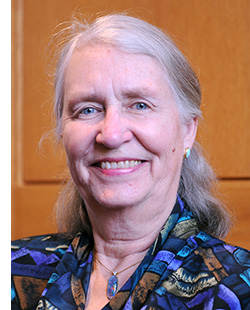
Did you ever travel to a different country? Did you try to speak their language? Or did you expect those around you to struggle with yours? Did you try to modify your behavior to fit in? Or did you stick to your role as tourist?
If you are male, have you ever gone to a place that was predominantly female—perhaps a ladies’ shop to purchase a gift for a loved one? Or taken your young children to a park filled with female nannies? Did you feel weird? Were you glad to get out of there?
Now imagine being a woman or minority in a field mostly populated by Caucasian men, such as optics. You can’t help but feel different. This feeling permeates your life, whether you realize it or not.
The National Academy of Sciences analyzed the status of women faculty in the sciences and published a report, titled “Beyond Bias and Barriers,” showing that most bias against minorities in the academic sciences is unconscious but nonetheless impedes their progress. I recommend it as a good place to understand what I’m talking about.
The ultimate barrier, in industry as well as academia, is referred to as the glass ceiling. Many studies have shown that minorities will be less likely to be promoted than their majority counterparts, even when they have equally excellent qualifications. This glass ceiling describes the idea that, while minorities can compete for top jobs, they are at a disadvantage in obtaining them. The very idea of the glass ceiling can cause behavior changes. One person might compensate by becoming excessively assertive or competitive (thereby called aggressive); another might give up the dream, thereby becoming underpaid (women are consistently paid less than men).
The field of optics includes many individuals who are physically different from the “rest of us,” presenting a challenge to the community. Yes, you can argue that optics should not depend on culture as defined by gender, race, disability, etc. But we each bring our own preconceptions to our work, and ignoring our differences doesn’t make them go away.
We all accept that optics already has a wide variety of cultures as defined by work roles. Scientists and engineers approach optics differently. Small businesses differ from large ones. Forms of decision-making help define the culture of an institution: Is it top-down or bottom-up? Regarding both work cultures and those shaped by gender and ethnicity, my motto is: Vive la difference! Our differences can bring a richness to the field of optics if we allow them.
How can we break down barriers while still respecting our differences? Here’s a place to start:
Accept cultural differences and acknowledge that they can cause unintended biases and barriers. If you don’t believe this, read up in the field and you’ll be convinced.
Make lists of minorities that you know (include yourself if appropriate) and present them to those in power, so they’ll remember them when openings occur, whether in careers, or in volunteer positions.
If you have a job opening, contact women and minorities in your network and ask them to apply. My role model for this is former OSA Executive Director Jarus Quinn, who consciously made opportunities for every qualified woman within OSA to participate. We need to make sure his pre-action (action before it's requested) continues within OSA.
Understanding the differences between minority and majority cultures will benefit everyone. I look forward to the day when all OSA members are pre-active in acknowledging bias and reducing barriers. What a rich and comfortable society we will become!
Elsa Garmire (garmire@dartmouth.edu) is the Sydney E. Junkins Professor, Dartmouth College, Hanover, N.H., U.S.A., and a former OSA president.
